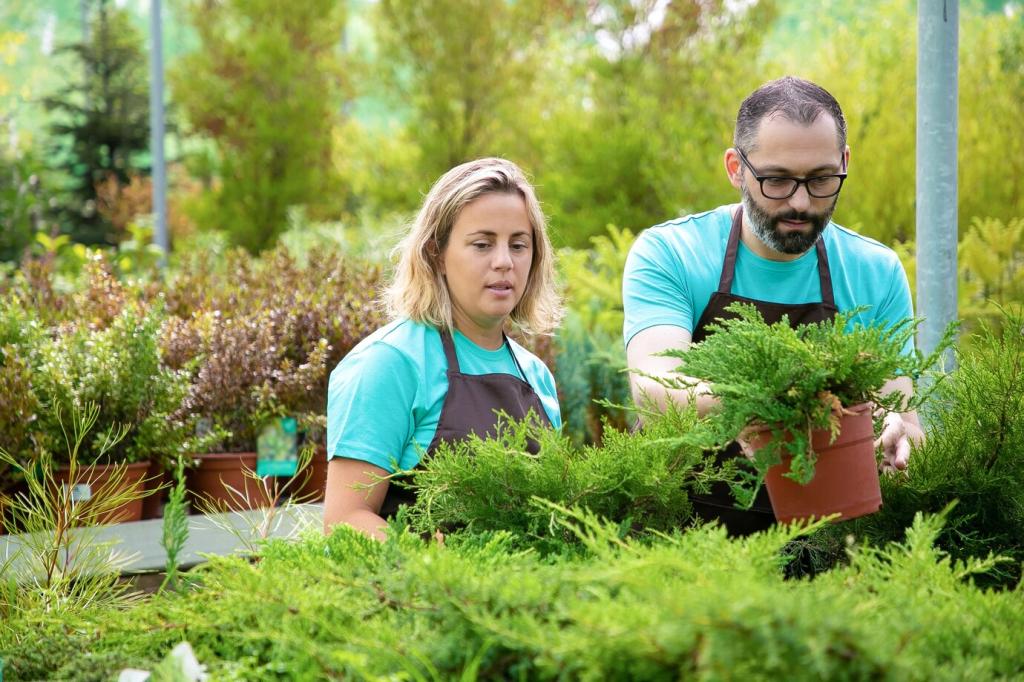
Biodiversity in Landscape Design: Living Gardens That Thrive
Selected theme: Biodiversity in Landscape Design. Step into a world where gardens hum with life, from microscopic soil allies to winged pollinators at dusk. Join our community, subscribe for seasonal guidance, and help shape landscapes that are resilient, beautiful, and ecologically generous.
Why Biodiversity Belongs at the Heart of Design
Ecosystem services you can see
When your landscape hosts many species, nature works alongside you: birds control pests, native plants filter runoff, and soil organisms cycle nutrients. Comment with your most surprising backyard helper and inspire others to notice hidden allies.


Resilience to a changing climate
Mixed plant communities buffer heatwaves, withstand storms, and rebound after drought. Diversity spreads risk across many species and strategies, making the whole garden tougher. Share your climate challenges, and subscribe for adaptive planting lists tailored to shifting conditions.
Design Principles for Layered, Living Landscapes
Combine small trees, shrubs, perennials, grasses, and mossy groundcovers to create shelter, nesting niches, and foraging routes. Vertical layers act like neighborhoods for wildlife. Post your favorite multi-layer combo and help readers visualize diverse, year-round structure.
Design Principles for Layered, Living Landscapes
Prioritize native ecotypes suited to your soil and climate. They feed local insects that, in turn, feed birds. Ask nurseries about seed sources, then share your regional species list in the comments to guide neighbors toward resilient choices.
Design Principles for Layered, Living Landscapes
Wildlife moves along green corridors. Link beds across yards, replace solid fences with hedgerows, and align street plantings with park edges. Invite a neighbor to co-design a pollinator path, and report back with photos of first visitors.
Welcoming Pollinators and Urban Wildlife
Plan bloom succession: spring ephemerals, summer perennials, and late-season asters and goldenrods. Leave winter seedheads for food and shelter. Subscribe for our seasonal plant calendars, and share which blooms keep your garden lively through the lean months.
Feed soil with compost and leaf mulch, protect fungal networks with minimal disturbance, and avoid synthetic quick fixes. As microbes flourish, plants strengthen. Share your best low-effort compost tip to help beginners kick-start living soils.
Soil as a Biodiversity Engine
A log pile hosts beetles, fungi, and overwintering pollinators; a sunny rock stack warms lizards and solitary bees. One reader’s child counted ladybirds there for a summer project—post your own small-wild refuge and observations.
Soil as a Biodiversity Engine
Rain gardens and bioswales
Shape shallow basins and meandering channels that infiltrate runoff. Plant sedges, rushes, and deep-rooted natives to filter and stabilize. Tell us how your first rainfall performed, and subscribe for our checklist to fine-tune infiltration rates.
Ponds, bogs, and edges
Create gentle shelves, varied depths, and vegetated margins to support amphibians and dragonflies. Leave a sunny patch for basking. Share photos of the first damselfly you spot—edge diversity often brings magical, unexpected encounters.
Irrigation that respects diversity
Favor deep, infrequent watering and efficient drip lines. Group plants by water needs, use moisture sensors, and mulch generously. Comment with your best drought hack, and join our mailing list for climate-smart irrigation schedules.
Observe, Adapt, and Share
Log sightings with iNaturalist or eBird, and track changes across seasons. Your data supports conservation while sharpening your eye. Post your latest observation, and encourage neighbors to map a community corridor together.

